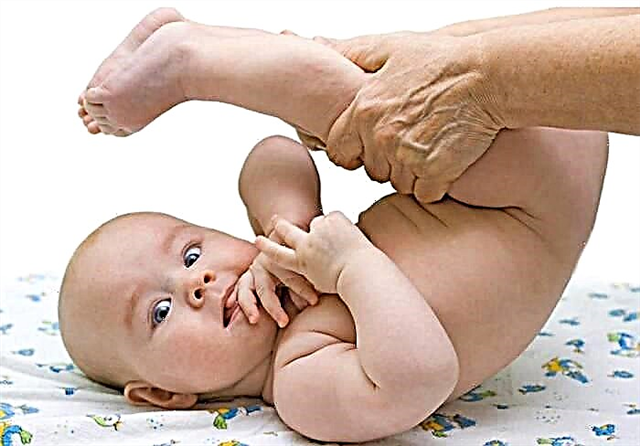Introducing Staphylococcus aureus
The staphylococcus family includes more than 20 species, each of which has its own distinctive features. But looking at any of the representatives of this genus through a microscope, we find a cluster of rounded bacteria, reminiscent of "grapes". This phenomenon is explained by the ability of a microorganism to divide simultaneously in several planes, forming a specific picture.
Staphylococcus aureus (Staphylococcus aureus) is considered to be the most famous of all species of the family and can cause a lot of various diseases. The range of manifestations of staphylococcal infection is huge, ranging from minor skin diseases to severe irreversible damage to internal organs.
Newborn babies and children of the first months of life are most prone to manifestation of staphylococcal infection due to the peculiarities of the immune system.
The microorganism got its name because of its characteristic color. S. aureus is golden in color, unlike the rest of the colorless members of the family. This feature is due to the presence of a pigment from the carotenoid group.
But not only this staphylococcus is different in color, its pathogenic properties, the ability to cause diseases and incredible resistance to environmental factors play a greater role. It is this bacterium that is able to grow and multiply in a wide temperature range (from 7 to 50 ° C), is resistant to fluctuations in acidity and the effects of various antiseptics.
In addition, Staphylococcus aureus synthesizes a number of enzymes that facilitate penetration and rapid distribution in the body. For example, catalase protects the microbe from the action of oxygen radicals, and b-lactamases destroy the structure of antibiotics. Coagulase causes blood plasma to coagulate, forming a kind of protective capsule around the bacteria. aureus produces many toxins, which determine the severe course of staphylococcal infection.
Staphylococci were quite successfully destroyed by antibacterial drugs and potent antiseptics. But over time, microbes began to adapt to the effects of aggressive factors. Some of them have developed resistance to common antibiotics, so they can cause the most dangerous and intractable diseases. Experts call this type of staphylococcus methicillin-resistant (Methicillin-resistant Staphylococcus aureus or MRSA).

Where does Staphylococcus aureus come from?
The favorite habitat of Staphylococcus aureus is the mucous membrane of the nose and mouth. Less commonly, the microbe can be found in the intestines, on the skin of the perineum and armpits. About 39% of healthy adults carry S. aureus, and the microbe is usually found during routine examination of the oronopharynx.
The pathogen is transmitted by airborne droplets (when talking, coughing, sneezing) or by contact (through contaminated hands, household items). The appearance of S. aureus in the nasal and oral cavity is often detected already in newborn babies. In this case, the source of the infection is mothers or medical workers with asymptomatic carriage of staphylococcus, items of care for the baby.
You can catch staphylococcus outside the hospital walls. The frequency of carriage of bacteria in the nasopharynx of one-year-old children reaches 50%. Staphylococcus aureus in the intestines of infants is part of the microflora in 40% of children, by the age of 2-3 years this figure decreases to 10-15%.
What is transient dysbiosis of newborns?
If the pregnancy proceeds normally and the placenta copes with its protective function, the fetus remains sterile. When entering a new world full of microorganisms, the skin and intestines of the crumbs are populated by various bacteria. Already during childbirth, the baby receives the microflora of the maternal genital tract, then further contamination with microorganisms occurs from the air, mother's milk, and the hands of the medical staff.
But if you compare the composition of the microflora of an infant and an adult, you can find completely different bacteria. In the first weeks of life, conditionally pathogenic staphylococci, and fungi, various strains of proteus are often found on the skin, mucous membranes and in the intestines of an infant.
This condition is called transient (passing) neonatal dysbiosis. As the baby grows, already at 1–3 weeks of life, the microflora is transformed. Harmful bacteria are gradually displaced from the intestine by bifidobacteria, and the skin is colonized by saprophytes. It turns out that staphylococcus aureus in newborns is quite a frequent occurrence.
Risk factors for developing staphylococcal infection
But why do some children develop diseases, while others do not even know about their carrier?
It has been established that conditions predisposing to the disease are:
- disorders in the immune system;
- damage to the skin and mucous membranes;
- inhibition of the growth of the normal microflora of the child.
The joint stay of the mother with the baby immediately after birth, feeding the baby exclusively with breast milk contribute to the colonization of "useful" microorganisms. The bacteria necessary for the baby gradually displace the conditionally pathogenic flora and contribute to the normal functioning of the body.
In cases of non-compliance with the sanitary and hygienic regime, insufficient child care, feeding the crumbs with a milk mixture, the replacement of the normal microflora may be delayed, the risk of developing diseases increases.
Manifestations of staphylococcal infection in newborns and infants
The first signs of the disease can appear both a few days after birth, and in the first year of life. Staphylococcus aureus in a child can cause a variety of diseases, but more often the skin, umbilical wound and intestines of the baby are affected.
Omphalitis
In case of non-observance of the hygienic regime, infection may penetrate into the umbilical wound. Inflammation quickly covers not only the umbilical residue, but also affects the skin, subcutaneous fat and even blood vessels in this area. The baby's condition deteriorates sharply, the baby becomes lethargic, drowsy, and loses weight.
Omphalitis in a newborn is a serious ailment that requires immediate medical attention and complex treatment. Delay in the appointment of therapy can lead to the spread of infection with the development of sepsis.
Lesion of the skin
Vesiculopustulosis
This ailment affects babies in the first week of life. Small bubbles (up to several millimeters) appear on the scalp, thighs, buttocks, in natural folds. The formed elements are filled with a transparent liquid, but over time it becomes cloudy. The severity of the condition of the crumbs depends on the number of rashes, but in general the course of the disease is favorable.

Pemphigus of newborns
Skin lesion in this disease is manifested by the formation of bubbles up to 1 cm in diameter, filled with a cloudy, serous-purulent fluid. After opening the element, an erosive surface is found, then a crust appears. The state of the crumbs is disturbed, the baby has all the signs of intoxication.
Pemphigus of newborns is a dangerous, highly contagious disease. If adequate treatment is started on time, recovery occurs no earlier than 2 to 3 weeks from the onset of the first symptoms.
Ritter's exfoliative dermatitis
This most severe form of staphylococcal skin infection in newborns begins at 1 to 2 weeks of life. The disease manifests itself with the formation of cracks and oozing in the area of physiological folds, navel, corners of the mouth.
In just a few hours, the infection spreads throughout the body, forming areas of redness on the abdomen, trunk, and extremities. In the future, bubbles, cracks, erosion appear in the affected areas, which are difficult to treat. At the same time, the baby's condition deteriorates significantly.
Due to the specific damage to the skin, this disease is often called "scalded skin syndrome". The culprit of the disease is the hospital, which has developed significant resistance, staphylococcus aureus.
Other skin conditions caused by Staphylococcus aureus
Staphylococcus aureus in infants can cause purulent inflammation of the hair follicles, in which case they speak of folliculitis. Spreading deep into the tissues, the pathogen can cause an abscess, furunculosis or carbuncle (if several follicles are involved in the process).
Bowel disease

Protracted staphylococcal enterocolitis often torment babies for the first three months. In this case, the child has frequent loose stools, often greenish in color, mixed with mucus or blood. The baby's condition largely depends on the severity of the infection. In mild cases, the baby is worried about a slight increase in stool frequency and unexpressed dyspeptic disorders.
If the disease is severe, then the risks of developing dehydration are high against the background of diarrhea and repeated vomiting. A microbiological examination of the crumbs feces reveals Staphylococcus aureus in infants in the feces.
Respiratory diseases
Although Staphylococcus aureus can cause a variety of respiratory injuries in infants, they are more common in middle-aged and older children. In some situations, the appearance of tracheitis, bronchitis, pneumonia, otitis media of staphylococcal nature and in infants is possible. Such ailments are distinguished by the severity of the course, and staphylococcal pneumonia often lead to the development of complications (abscess, pleurisy, pneumothorax).
The defeat of various organs
Staphylococcus aureus in infants can cause disease in almost any organ. There are frequent cases of purulent inflammation of bone tissue (osteomyelitis) caused by this particular pathogen. About 2 to 3% of meningitis in infants is due to S. aureus invading the meninges. Multiple purulent lesions of various organs usually occur with sepsis (a common inflammatory process).
Sepsis
The development of a systemic response is preceded by the entry of the pathogen into the bloodstream of the baby and its spread throughout all organs. Due to its unusual properties, high stability and the production of toxins, the microbe is able to multiply rapidly in the body, forming foci of purulent infection.
Why staphylococcus aureus is dangerous for a newborn
Staphylococcus infection in newborns with various pathologies and premature babies is especially dangerous. These crumbs are more prone to a systemic inflammatory response. Even with the right treatment, the mortality rate in this group reaches 20%.
At the same time, it is these babies that are most susceptible to a dangerous disease. The reason for this is the reduced immune reactivity, and a long stay in the intensive care unit and the second stage of nursing, and invasive manipulations (setting boats, mechanical ventilation).
Carriage of the pathogen in the nasal passages of a newborn is of great epidemiological importance and, under unfavorable conditions, increases the risk of developing sepsis by 3 times. If Staphylococcus aureus is detected not only in the nasal cavity, but also in the umbilical wound, the risk of this dangerous condition increases 10 times.
Diagnostic methods
Microscopy
To determine whether the baby is a carrier of staphylococcal infection, microscopic examination of the discharge from the nasal passages and oral cavity, feces and biological fluids can be carried out. The results of this study can be obtained almost immediately after staining the biomaterial according to Gram. But it is not worth making a diagnosis relying only on this method. This method helps to suspect the pathogen and determine the plan for further examination of the baby.
Blood tests by ELISA, RPGA have no diagnostic value and cannot be used to identify the pathogen.
Bacteriological method
The most widespread and clinically significant diagnostic method has long been the seeding of biomaterial on a nutrient medium. Within 18 - 24 hours, researchers can detect the appearance of yellowish colonies. Using this method, you can not only detect Staphylococcus aureus, but also identify it, determine its properties, sensitivity to antibacterial drugs.
Particular attention is paid to determining the sensitivity of the microorganism to oxacillin. Staphylococci resistant to this drug will be immune to commonly used β-lactam antibiotics, including cephalosporins.

Express diagnostics
To quickly identify the pathogen, a special latex agglutination test can be used. This test involves the adhesion of a reagent loaded with fibrinogen and antibodies with coagulase and protein A specific to Staphylococcus aureus. Within 2 minutes after the test, an agglutination reaction, the formation of specific lumps, can be detected.
The detection of the bacteria itself in sterile biological media (urine, cerebrospinal fluid, blood, pleural exudate) always indicates the development of staphylococcal infection.
Treatment of diseases caused by Staphylococcus aureus
There is a lot of controversy about the need for treatment, the use of antibacterial drugs when Staphylococcus aureus is detected in a baby. But only a doctor who will assess the situation as a whole can make a decision on the expediency of therapy and choose the drugs necessary for the child. After all, the carriage of S. aureus in a child does not always end with the development of the disease.
The main groups of drugs for the treatment of staphylococcal infection
Antibacterial drugs
In the case of a staphylococcal infection, it is almost always necessary to use systemic antibiotics. The result of bacteriological culture with determination of sensitivity to common drugs will help in choosing the necessary agent. So, in the case of detection of miticillin-sensitive staphylococcus, many drugs from group of β-lactam antibiotics, macrolides, cephalosporins ("Ampiox", "Oxacillin", "Cefepim").
The situation with the treatment of infections caused by methicillin-resistant strains of the pathogen is more complicated. In this case, conventional drugs are powerless. Doctors have to prescribe treatment with potent drugs, taking into account the sensitivity to antibiotics ("Vancomycin", "Ciprofloxocin", "Fuzidin", "Clindamycin").
If a staphylococcal infection has led to the development of a serious condition in a baby, they resort to the use of several antimicrobial agents, a combination of antibiotics from various groups.
Bacteriophages

High efficiency of treatment and a minimum number of side effects can be expected from the use of phage therapy. These drugs are specific viruses capable of destroying a specific bacteria. For staphylococcal infection, "Staphylococcal bacteriophage" and "Pyobacteriophage" are used.
Depending on the manifestations of the infection, these drugs can be used both locally, in the form of lotions and irrigations, and inside, with staphylococcal enteritis. In addition, these agents are used for administration into body cavities, for example, into the abdominal or pleural, bladder.
Immunostimulants
For the formation of defense mechanisms against staphylococcus, special vaccines, staphylococcal toxoid, have been developed. A small patient can get ready antibodies to the pathogen from antistaphylococcal immunoglobulin, hyperimmune plasma.
If the baby often has exacerbations of staphylococcal infection, you should consider the use of drugs based on bacterial lysates (IRS-19, Bronchomunal, Imudon). These drugs are able to form immune defenses against various bacteria. But although many studies indicate positive results of treatment with these drugs, their effectiveness has not yet been proven.
General strengthening procedures
Of great importance in the development of staphylococcal infection is the state of the baby's immune system. Parents should not forget about the importance of such simple and affordable methods of strengthening the body's defenses as hardening, regular walks, and proper nutrition.
Infants in their first 6 months should be exclusively fed with breast milk, which promotes the development of normal intestinal microflora and forms immune defenses against many infections. The diet of the crumbs after six months should be varied, you should definitely include fresh fruits and vegetables, cereals and meat dishes. These products are rich in vitamins and microelements necessary for the baby.
Complications and consequences of the transferred staphylococcal infection
The most formidable complication of staphylococcal infection for the baby is sepsis. Omphalitis is especially dangerous for newborns, since the pathogen quickly spreads throughout the body through the umbilical vessels.
In addition, after suffering an acute infection, children often acquire chronic diseases of the respiratory and digestive systems. In case of violation of the protective properties of the body, the signs of the disease may appear again.
Prevention of staphylococcal infection
To protect the baby from staphylococcus infection, carriers of the disease should be identified and treated in time. Medical personnel of medical institutions regularly undergo scheduled examinations, if necessary, medical workers receive appropriate treatment.
Finding the baby after birth with the mother, laying on the stomach and early breastfeeding significantly reduce the risk of infection of the newborn with pathogenic bacteria.
To prevent illness in a baby, it is worth observing a hygienic regime, washing hands thoroughly when caring for a child. Avoid contact between the infant and adults with manifestations of infectious diseases of the nasopharynx, skin of the hands.

Conclusion
Staphylococcus aureus is the culprit in the development of many dangerous infectious diseases. It has colossal resistance to the action of many antibiotics and antiseptics. But this microbe does not always cause illness, often the symptoms of staphylococcus in infants are absent, there is a long-term asymptomatic carrier of the bacteria.
The question of whether the baby needs treatment should be decided individually in each specific case, based on the child's well-being.



